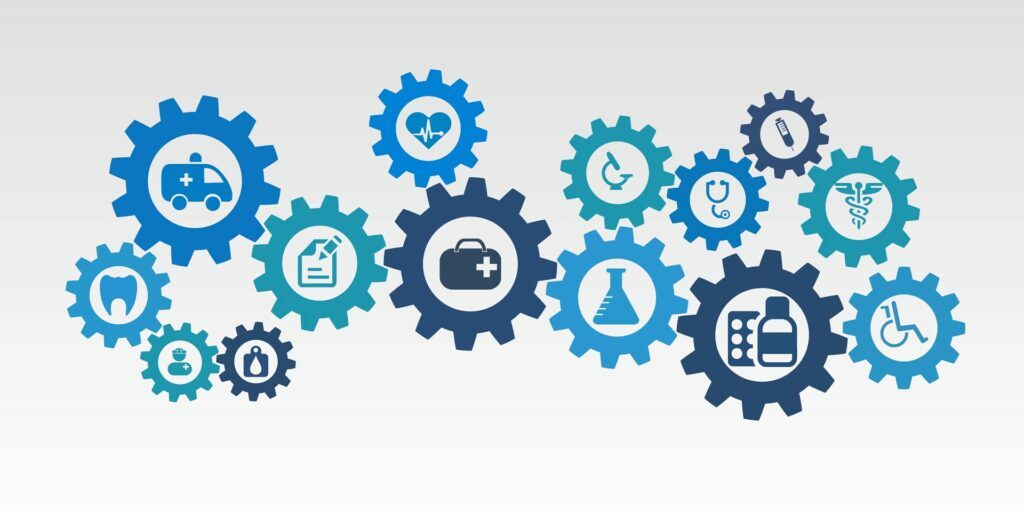Savvy Diversification Series – Advice I Wish I Had Followed on How to Become a Medical Translator

The Savvy Newcomer team has been taking stock of the past year and finding that one key priority for many freelance translators and interpreters has been diversification. Offering multiple services in different sectors or to different clients can help steady us when storms come. Diversification can help us hedge against hard times. With this in mind, we’ve invited a series of guest authors to write about the diversified service offerings that have helped their businesses to thrive, in the hopes of inspiring you to branch out into the new service offerings that may be right for you!
I had just graduated with an MA in translation from Kent State University. My grades were good, and I had some real-world experience under my belt. But my quest to secure my place as a freelance Spanish-to-English translator in the T&I industry was still off to a bumpy start, and I wasn’t sure why.
It turns out I had made an all-too-common rookie mistake: I hadn’t wanted to limit myself to one specialization for fear of missing out on work, so I had marketed myself as a general translator willing to tackle any kind of project. It’s easy to get lost in the crowd if you work in a common language pair and aren’t actively trying to set yourself apart. When these broad marketing attempts were met with crickets, I realized that I needed to choose a specialization and really commit to it. I had enjoyed learning about diagnostic tests, surgical techniques, and medical conditions for assignments in the MA program, and I loved the idea of conveying clear and precise medical information to help patients receive quality health care. So I began pursuing continuing education in medical concepts and began marketing myself as a medical translator. I only really hit my stride when I made that change.
Here are some tips I wish I had been given (or taken more seriously!) when I was working to break into medical translation:
- Don’t be afraid to specialize: chances are it won’t limit the work you are offered.
Specializing has led to more potential client interest in my business, not less. Clients may be wary of the quality of translators who are too broad in their offerings. Narrowing the scope of the copy on my website and focusing on how I could help my clients in the medical field allowed me to build good client relationships and instilled trust in my abilities.
- Support and learn from translators in your language pair and field.
Too often translators see colleagues in their language pair and specialization as direct competition who will hurt their business. I’ve found the opposite to be true. My Spanish-to-English translation colleagues, particularly my colleagues at the Black Squirrel Translator Collective, have introduced me to good Spanish-English medical translation resources like Cosnautas, helped me dissect tricky medical concepts, given me information about upcoming continuing education opportunities, and more. Speaking with more experienced translators has been a crucial part of the growth of my business and my confidence as a medical translator.
- Study what people communicate about in the medical field.
It’s nearly impossible to accurately translate concepts you don’t understand. Building your knowledge of medical concepts can increase both the accuracy and the speed of your work.
Take translator-oriented training on language services in health care.
In 2020 and 2021, Michèle Hansen taught a set of courses for Training for Translators called “Medical Concepts and Terminology for Translators and Interpreters.” These multi-week interactive courses covered the anatomy of different body systems and highlighted terms with which translators should be particularly careful. The feedback I got from the assignments was invaluable and made me feel more confident that I could succeed in this specialization.
Attending ATA conferences and ATA chapter training events has allowed me to make connections in the industry and learn more about various aspects of medical translation. I try to sign up for webinars on medical conditions that I often see in my work like cancer and diabetes, so I’ve found ATA webinars like Yuliya Speroff’s “Oncology for Medical Interpreters and Translators” and Tracy Young’s “Diabetes 101: An Overview for Medical Translators and Interpreters” particularly useful!
Don’t underestimate monolingual resources on medical concepts.
Several companies like Coursera and EdX offer free or low-cost self-paced massive online open courses (MOOCs) in health and medicine. I took courses that seemed relevant to concepts I was likely to see in medical translations such as medical terminology, vital signs, and imaging studies. While these courses were taught in English and were not geared towards translators, I kept a log of important terms and researched their Spanish equivalents. I used this to create a helpful reference for translation projects. This really drove home the meaning behind the words I translate.
- Study how people communicate in medical contexts and why
It’s important to understand the writing conventions used in your target language so your work sounds as professional and natural as possible to your target audience.
Read and analyze a variety of parallel texts in the field to understand target audience expectations for different text types.
These can include documents like your own medical records, inserts that come with your medications, journal articles, and patient-oriented articles on specific diseases. As you read, identify the audience of these sources: Is this document written for a doctor, a researcher, or a patient? How does this intended audience affect the word choice, register, and tone of the target text? How would you reflect those aspects of the text in a translation? What is the purpose of this text? What cultural differences would you need to consider if you were to translate the text? This kind of critical analysis can help you navigate how to approach similar real-world projects.
Study medical writing resources in your target language to reinforce good writing practices in the field.
The American Medical Writers Association (AMWA) offers resources for medical writers of all experience levels. One of its most comprehensive resources for beginners is the Essential Skills Certification Program, which consists of self-study workbooks and exams on grammar and usage, medical terminology, ethics, punctuation, sentence structure, statistics, and tables and graphs. This program refreshed my understanding of target language writing conventions, helped me better understand statistical concepts I encountered in medical journal articles, and improved my ability to catch and avoid grammatical issues. Reviewing the AMA Manual of Style can also help translators handle aspects of texts such as abbreviations and units of measure in ways that English-speaking medical professionals are accustomed to seeing.
The path to specializing in medical translation is not one-size-fits-all, but relying on the translation community and finding ways to constantly learn about the field can make the process much easier!
This blog post was edited by Victoria Chávez-Kruse of The Savvy Newcomer team.
About the Author

Hannah Sampson, MA, CT, is an ATA-certified Spanish-to-English translator and editor based in Ohio. She holds a B.A. in Latin American Studies and Spanish from Ohio Wesleyan University and an M.A. in Spanish Translation from the Institute for Applied Linguistics at Kent State University. Hannah has collaborated with the Black Squirrel Translator Collective since 2019. She specializes in medical translation.
